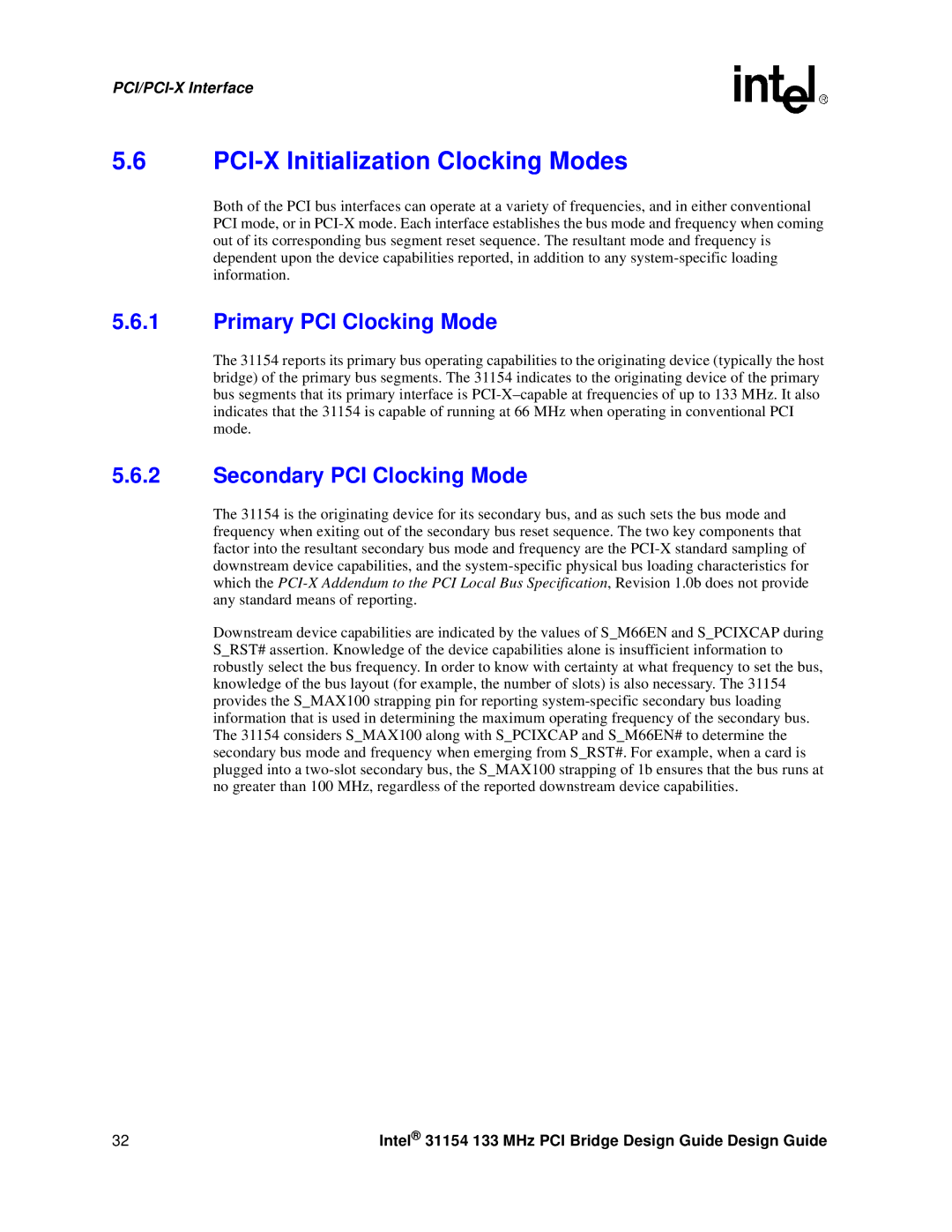5.6PCI-X Initialization Clocking Modes
Both of the PCI bus interfaces can operate at a variety of frequencies, and in either conventional PCI mode, or in
5.6.1Primary PCI Clocking Mode
The 31154 reports its primary bus operating capabilities to the originating device (typically the host bridge) of the primary bus segments. The 31154 indicates to the originating device of the primary bus segments that its primary interface is
5.6.2Secondary PCI Clocking Mode
The 31154 is the originating device for its secondary bus, and as such sets the bus mode and frequency when exiting out of the secondary bus reset sequence. The two key components that factor into the resultant secondary bus mode and frequency are the
Downstream device capabilities are indicated by the values of S_M66EN and S_PCIXCAP during S_RST# assertion. Knowledge of the device capabilities alone is insufficient information to robustly select the bus frequency. In order to know with certainty at what frequency to set the bus, knowledge of the bus layout (for example, the number of slots) is also necessary. The 31154 provides the S_MAX100 strapping pin for reporting
32 | Intel® 31154 133 MHz PCI Bridge Design Guide Design Guide |
